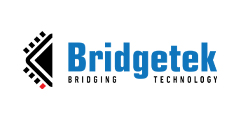平台合作
相关推荐
Is audio output mono or stereo?
The output audio from EVE is mono.
What is EVE’s audio output?
The audio output is a PWM signal that goes through 3 stage of filtering to generate the final analogue audio signal. The signal to noise ratio is 46db.
What is EVE’s audio output?
The audio output is a PWM signal that goes through 3 stage of filtering to generate the final analogue audio signal. The signal to noise ratio is 46db.
For Analog Audio Processors, How should unused output pins be handled?
Unused output pins can be left OPEN.
What is the audio output sampling rate?
48KHz, up sampled if source is not 48Khz.
What are the key application areas for the FT900?
Home Automation Systems, Home Security Systems, Enabling Hi-speed USB Host or Device capability within an Embedded product, Set-top box applications (e.g. USB tuner), Industrial control and medical system applications, Embedded Audio applications, IP-Camera, VIOP phone, Data acquisition systems, Industrial Control, MP3 Player,
What audio format does EVE support?
EVE supports audio wave playback for mono 8-bit Linear PCM, 4-bit ADPCM, and μ-Law coding format at sampling frequencies from 8kHz to 48kHz.
I can see a Sine wave on the Audio_L pin of the BT81x even when I play no audio. How can I disable this?
The audio out pin will normally output a carrier wave even when no sound is being played. To stop this, you can play the MUTE sound by writing 0x60 to the REG_SOUND register.
Can I store both audio and image files in the object RAM at the same time?
Yes. They will be treated as separate objects. The only limitation is the files must be small enough to fit in the memory (FT80X: 256kBytes, FT81X: 1MBytes)
What is EVE?
EVE stands for Embedded Video Engine, which is powered by FTDI Chip in-house technology developed for embedded graphics and video application. It will greatly reduce the development effort as well as MCU bandwidth required for graphic displays. EVE has 3 in 1 functionality including display, audio, and touch, and in combination with its object oriented methodology makes the creation and rendering of graphics very easy/intuitive while at the same time greatly reducing the system implementation costs.
I am trying to use sounds and audio in my EVE application. The code looks correct but I cannot hear any sound output.
EVE outputs the audio signal via the Audio_L pin. This goes into an external amplifier circuit and then on to the speaker. Many development modules for EVE include the amplifier on the PCB and either an on-board speaker or a connector for an external speaker. Here are some things to check: Check all connections and that the external speaker (if used) is of a suitable impedance for the amplifier used Check that any jumpers on the board are set to power up the amplifier Check that the power source used has sufficient current capability (due to the display backlight and audio circuit, the overall display module can require quite a lot of current, often several hundred milliamps or more) Ensure the audio amplifier is not in the power-down state. Many evaluation modules have a power-down signal controlled by a GPIO line on EVE to power down the amplifier when not used. Check that the GPIO and GPIO Direction registers in EVE have this GPIO line set as output and to the correct state to enable the amplifier. Ensure the volume has not been turned down. Volume is controlled by REG_VOL_SOUND for sounds and REG_VOL_PB for playback of audio. A value of 0xFF is highest whilst a value of 0x00 is muted.
What are the benefits of using a separate graphics controller like EVE?
1.It allows you to use a low-cost MCU for applications with Graphical Display, Touch and Audio. Ideal for upgrading existing products as well as new products. Create attractive and well featured HMIs with very light loading on the MCU. External flash offloads storage from MCU memory (BT81x). Use your preferred MCU – SPI command set allows use with almost any MCU. 2. Having a separate graphic controller provides flexibility. Have a greater choice of MCUs – code can be easily ported to work with different MCUs. Change to a completely different MCU, add the EVE SPI routines, and re-use the same EVE application code saving a lot of cost, time and effort. 3. Bridgetek’s Powerful graphical toolchains and code examples make application development easy. EVE Screen Designer allows the GUI to be developed on a PC and generates code. EVE Screen Editor allows users to develop screen content graphically with drag and drop. Comprehensive software examples make developing the code easy. 4. Benefit from object oriented operation. Programming is easy and intuitive. Easily add touch using the tagging and tracking features whilst minimising loading on the MCU.
Does EVE support digital audio volume control?
Yes, EVE has 8 bit resolution volume control.
The FT900 supports the I2S bus interface, what is I2S?
I2S (Inter-IC Sound), is a serial bus interface standard used for transferring digital audio.
You offer conversion tools for images, audio files and fonts to run on windows. Will there be Linux and MAC equivalents?
Not at this time. The utilities are free examples of converting standard file formats to alternative standard file formats compatible with EVE. As such alternative tools could be sourced by the user for Linux and MAC.
电子商城
现货市场
































































































































































































